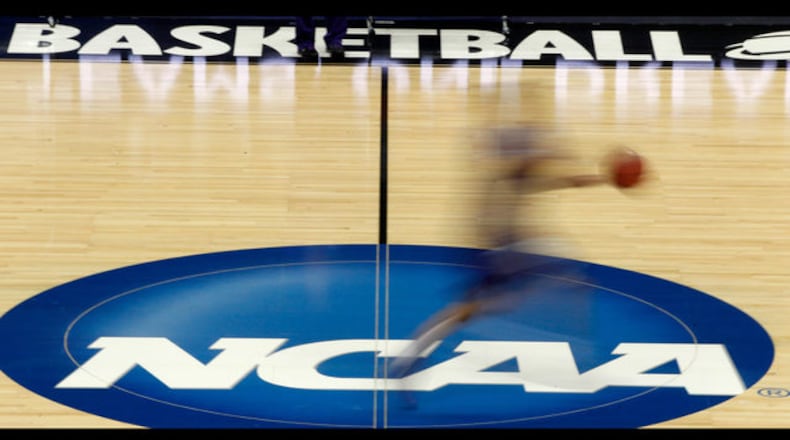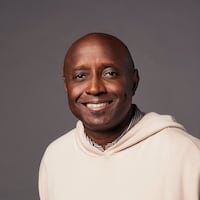You may have seen a truck commercial starring Georgia coach Kirby Smart that effectively plays on his image as a “tough kid from Bainbridge.” Jake Fromm, a tough kid from Warner Robins, should have been free to make the same kind of endorsement deal before leaving UGA for the NFL.
I'm hopeful that, starting in 2021, the athletes still in college will have the same rights to their name, image and likeness (NIL) as all other workers. That's the headline the NCAA wants for the proposed rule changes supported by its board of governors Wednesday and expected to be approved by member schools in January. But always examine the details when the NCAA says it is making substantive changes to its exploitative model.
The NCAA’s proposed rule changes contain lots of “guardrails” that would severely limit the NIL market for athletes. The NCAA showed its hand with its plan to ask Congress for “safe harbor” antitrust exemption to protect it from lawsuits filed over NIL. Another tell is that the NCAA wants federal lawmakers to preempt state laws that give athletes more NIL rights.
There are some positives for athletes in the NIL proposal, including the ability to profit from social media or other entrepreneurial projects. But that’s good only in comparison with the current rules, which bar most athletes from profiting from their NIL at all. It’s inevitable that, under the new rules, athletes who tried to get a fair-market deal for their NIL would collide with the NCAA’s “guardrails.”
The NCAA said the new rules are to include “no name, image and likeness activities that would be considered pay for play; no school or conference involvement; no use of name, image and likeness for recruiting by schools or boosters; and the regulation of agents and advisors.”
No one expects NCAA schools or conferences ever to voluntarily pay athletes for NIL or anything else. But would the NCAA consider it “pay for play” if boosters sign athletes to endorse products for their businesses? The whole point of doing so is because they are athletes with name recognition.
Does the NCAA, which struggles to enforce its current rules, really think it can prevent boosters from using NIL for recruiting? They should be allowed to do that without restriction. But the NCAA needs that “guardrail” to protect it from the existential threat of its athletes one day being able to seek the true value of their labor and marketing.
The NIL proposal includes another “guardrail” to protect against that. The NCAA must agree that NIL agreements represent fair market value. The NCAA said it wants to protect players from signing below-market NIL deals. That could easily be achieved by allowing a true free market for NIL.
Instead, the NCAA is more likely to reject NIL deals because it believes they are too lucrative. One of its guidelines for the proposed rule change is that it makes clear “the distinction between collegiate and professional opportunities.”
That distinction is not important to NCAA schools when they cash checks from television partners that use prominent athletes to promote games that feature those athletes. Schools have no problem taking money from sponsors who paste their logos on the shoes and apparel worn by their marketable athletes.
The NCAA said it doesn’t want NIL rules to interfere with “fair and balanced competition.” That’s never a worry when the top programs spend multiples more than lower-tier programs on facilities and salaries for coaches and administrators. Competitive balance is an issue for the NCAA only when athletes get a cut of the pie they make.
Another absurdity with the NCAA’s stance is that there are no NIL restrictions for students who don’t play sports. That’s in tension with the NCAA’s claim that NIL rules should ensure that athletes “are treated similarly to non-athlete students unless a compelling reason exists to differentiate.” In a fair system, the reason would be that the NIL rights of athletes known to the public are worth more than those of average students.
The NCAA acknowledged this when it allowed athletes in Olympic sports to be paid for training expenses, medals and endorsement deals without losing eligibility. Of course, those athletes aren’t generating profits that coaches and administrators can take for themselves.
It’s clear why the NCAA is trying to give the appearance of serious NIL reform. It’s desperately trying to protect its “amateur” model against the public, legal and political pressures that increase as its revenues explode. The first sign of trouble came in 2014, when former UCLA basketball player Ed O’Bannon won an antitrust lawsuit filed against the NCAA.
That decision spurred members of the Power Five conferences to allow athletes to receive “full cost of attendance” scholarships. The NCAA responded by dramatically increasing its spending on congressional lobbying.
It paid $750,000 for those efforts in 2015, which USA Today reported was more than it spent on lobbying over the previous three years combined. In the first quarter of this year, college sports organizations spent a combined $535,000 to lobby Congress, according to USA Today's review of federal disclosure forms. This development is sure to upset people who don't want politics in sports.
Rep. Mark Walker (R-North Carolina) co-sponsored a bill last year that would end NCAA restrictions on athlete compensation for publicity rights. He said Tuesday that the NCAA board’s request for an antitrust exemption is a “reason for pause.”
“The NCAA has spent decades using their lawyers to keep young men and women from receiving basic (Constitutional) rights, even as they grew to a billion-dollar-a-year organization,” Walker said in a statement. “I am sure those same lawyers can help them navigate this action without congressional intervention.”
If Congress gets involved, its goal should be ensuring college athletes have full rights as workers. Considering the current makeup of that body, that’s an even longer shot than the NCAA really allowing athletes robust publicity rights starting in 2021.
About the Author
The Latest
Featured


